Ca Tru songs primarily use a poetic form known as “hat noi”, featuring expressive lyrics recited melodically. These songs delve into profound themes such as love and life philosophy. This beloved singing style revolves around couplets, which encapsulate the essence of the message. Crafting a couplet is challenging, and not everyone can grasp its meaning just by listening to it.
Nguyen Thuy Hoa is a sixth generation performer of "hat noi." She is known for her pure, gentle, and soulful voice. One of her standout performances is the song "Singer Hong, Singer Tuyet."
Hoa said, "This song, composed by the talented Vietnamese poet Duong Khue, is regarded as a masterpiece in Ca Tru. Its precise and exemplary lyrics make it a mandatory practice piece for anyone learning Ca Tru before they can progress to other tunes."
What sets Thai Ha apart from other Ca Tru clubs in Vietnam is their emphasis on family performances. In Thai Ha, it's a tradition for a father or brother to be the lute player while the daughter or sister takes on the role of vocalist. This adds a special touch to their performance.
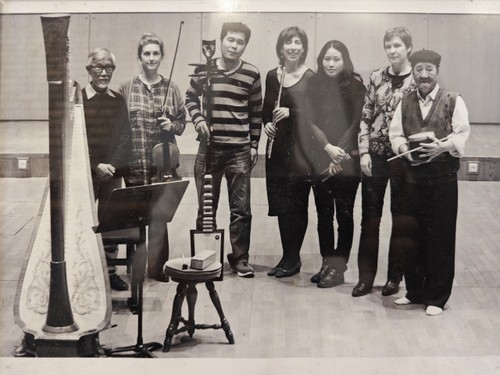 Thai Ha group members' first performance in France Thai Ha group members' first performance in France (Mrs. Thuy Hoa is the third from right to left)
|
The Thai Ha Ca Tru Club engages in numerous activities, not just in Vietnam, but overseas. They have performed in Italy, Japan, and China, with a notable appearance at the World Music Festival in France in 2014. Their performances have been consistently well-received.
Thuy Hoa recalled their first performance in France in 1995, where the Thai Ha group members were nervous about how an international audience would react to Ca Tru. They were initially given just 15 minutes to perform, but the audience's response was so enthusiastic that on the third day they were given 60 minutes – half the show.
Hoa said, "I didn't anticipate that Ca Tru would be so warmly embraced by the audience there. After our performance, particularly for the overseas Vietnamese in France, people approached the group to express how deeply moved they were when the ca nuong sang, accompanied by the sound of the dan day and drums. It evoked strong feelings of nostalgia for their homeland and a connection to their ancestors. Many were moved to tears as they listened."
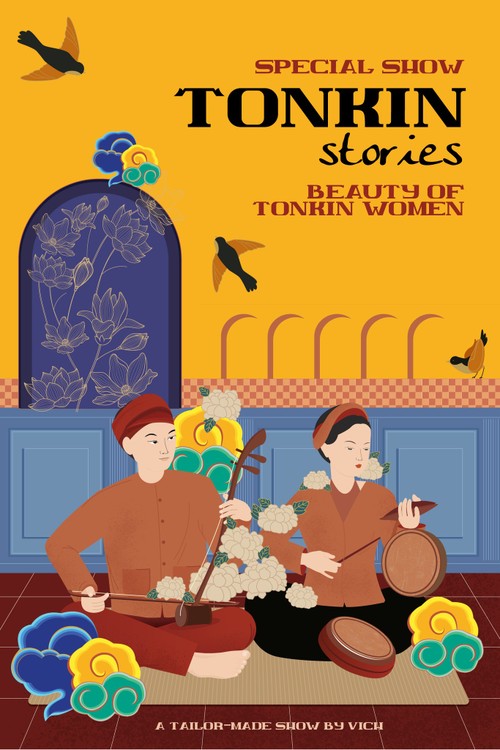 Photo: The Vietnam Intangible Cultural Heritage Promotion Center (VICH) Photo: The Vietnam Intangible Cultural Heritage Promotion Center (VICH) |
In Trà Thang, a cozy café in downtown Hanoi, culture aficionados are journeying back to the 1930s and immerse themselves in the traditional art of “Xam” singing, which has its roots in Vietnam’s northern region dating back centuries. Hosted by the Centre for the Promotion of Vietnam’s Intangible Cultural Heritages, the recent “Xam Tonkin” program highlighted the storytelling and singing traditions of blind individuals from the early 20th century.
In the show, four Xam artists wore simple clothes. Three men donned brown shirts, hats, and dark glasses, while the women wore dark shirts with light aprons and knee-length skirts. They sat on a mat, with one artist playing the “nhị”, the two-string Vietnamese fiddle and while others played drums and castanets.
The artists and audience sat close to each other, creating a warm and intimate atmosphere. Before each performance, the audience members shared what they know about xam and then learned the basics through the sharing from the expert artists.
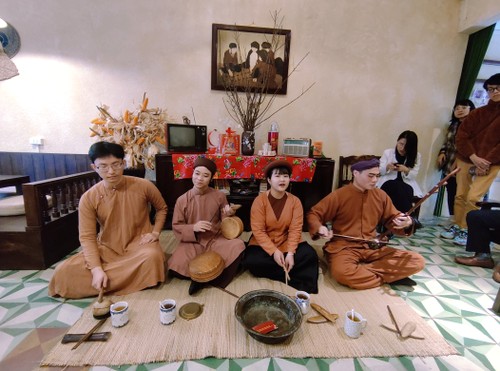 Xam artist Ngo Van Hao (R) plays the two-string fiddle (Photo: Phuong Khanh/ VOV) Xam artist Ngo Van Hao (R) plays the two-string fiddle (Photo: Phuong Khanh/ VOV) |
In the past, Xam artists would bring daily life stories into songs, which would then spread rapidly throughout the town. This made Xam one of the quickest ways to share information.
Xam artist Ngo Van Hao explained, "In the past, most Xam singers were blind or visually impaired and couldn't read. They learned songs orally, passing them down quietly. Some songs were lengthy and took about an hour to sing. Despite their impairment, they sang passionately, blessed with sharp hearing capability and memory."
Among the traditional Vietnamese art forms, Xam is something quite simple, natural and familiar to people’s life. Xam songs are diverse in content, but all praise love and human values, so it’s loved and treasured by all.
Nguyen Hoang Hiep, a xam artist who prepares the content of a Xam program that before relocating to Hanoi, Xam singers travelled between villages in rural areas to earn a living. However, when the French established Hanoi as the capital of Tonkin, a name used by the French from 1883 to 1945 for the protectorate of Tonkin, part of French Indochina, Xam singers saw it as a promising opportunity and decided to get on the buses and trains to go to the city. Hanoi had numerous trams at the time, providing Xam singers a mobile stage for their performances.
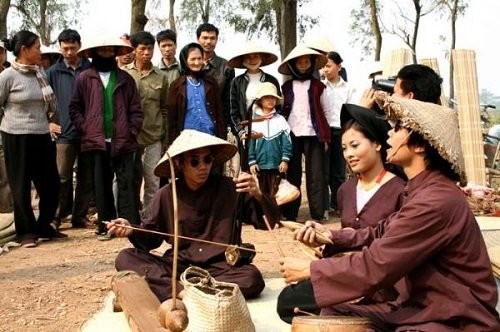 (Photo:tuoitre) (Photo:tuoitre) |
Xam singing wasn't just performed on busy trams but also at bus stations, markets, and street corners, as well as during significant occasions like weddings, funerals, and death anniversaries. "Xam cho" is a kind of Xam singing performed in marketplaces to attract listeners. Despite the noisy surroundings, the powerful beats of the drum and the distinctive melodies of Xam songs could still be heard.
In the past, when someone passing by a Xam group wanted to show appreciation, they would toss coins into a bronze pot placed in front of the artists. The louder the coins clinked in the pot, the more excited the Xam artists would become.
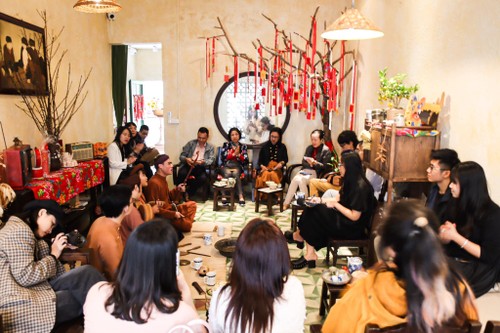 At the recent “Xam Tonkin” program, there were about 20 audience members, mostly young people, including some children. (Photo:VICH) At the recent “Xam Tonkin” program, there were about 20 audience members, mostly young people, including some children. (Photo:VICH) |
Before the show, each person received a red envelope containing several old coins. These coins were given to the Xam artists as a symbolic token of appreciation after their performance.
20 year-old Mai Thi Thuy Hang is the main vocalist of the group. She has been practicing Xam since she was 10 years old. Hang said, "My grandfather has always been passionate about folk music, and he introduced me to Xam singing, which I instantly loved. The lyrics are vivid and depict real-life experiences. My favorite Xam song, and the first one I learned, is “Hanoi is like a fairy land,” which merges various melodies into a single captivating piece. It also depicts the vibrant life of Hanoi in the past.”
Besides listening to Xam songs and the stories behind them, the audience also learned how to use the musical instruments including a monochord, the two-string fiddle, drums, bamboo tocsin, and castanets.
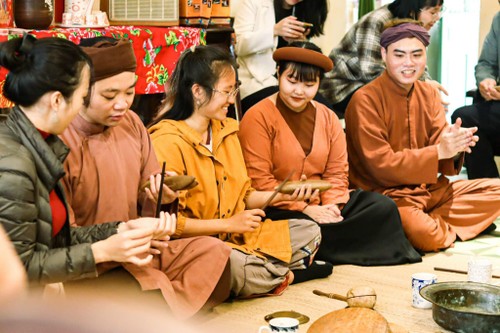 The atmosphere turns warm and friendly as both the artists and the audience shares laughter and joy, feeling deeply moved.(Photo: VICH) The atmosphere turns warm and friendly as both the artists and the audience shares laughter and joy, feeling deeply moved.(Photo: VICH) |
Pham Thi Quynh Lien and Duong Viet Thanh couldn’t hide their excitement.
"Wow, Xam is truly incredible! Through the program, I learned that our predecessors were so talented and adaptable in any setting, whether they performed at markets or train stations. They were versatile, playing multiple instruments and singing. I wish I could hear the Xam singers of the previous generations perform live. Despite their visual impairment, their soulful singing must have been absolutely amazing.”
"I’m a business economics student, but I’m deeply fascinated by Vietnamese culture. I frequently attend folk music performances such as Cheo and Ca Tru singing. I prefer sitting in small venues close to the artists to engage with them. I have many questions for the artists, and I hope to join community classes in the future to gain more experience and knowledge.”
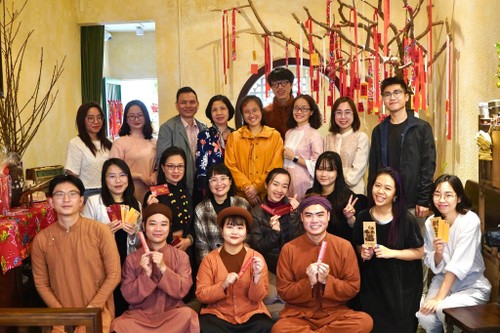 The program concludes with artists and audience coming together to sing a Tet Xam song, exchanging lovely New Year wishes. (Photo: VICH) The program concludes with artists and audience coming together to sing a Tet Xam song, exchanging lovely New Year wishes. (Photo: VICH) |
Dinh Thao, Deputy Director of the Centre for the Promotion of Vietnam’s Intangible Cultural Heritages, said Xam singing will continue to be promoted on different platforms, adding the center has already experimented with some performances on buses and hopes to expand this initiative in the future.
Thao said, "Soon, we will host Xam shows on buses, traveling around the streets of Hanoi. It’s like a mobile stage, providing a unique and enjoyable experience. It’s reminiscent of the old tram performances in the past.”